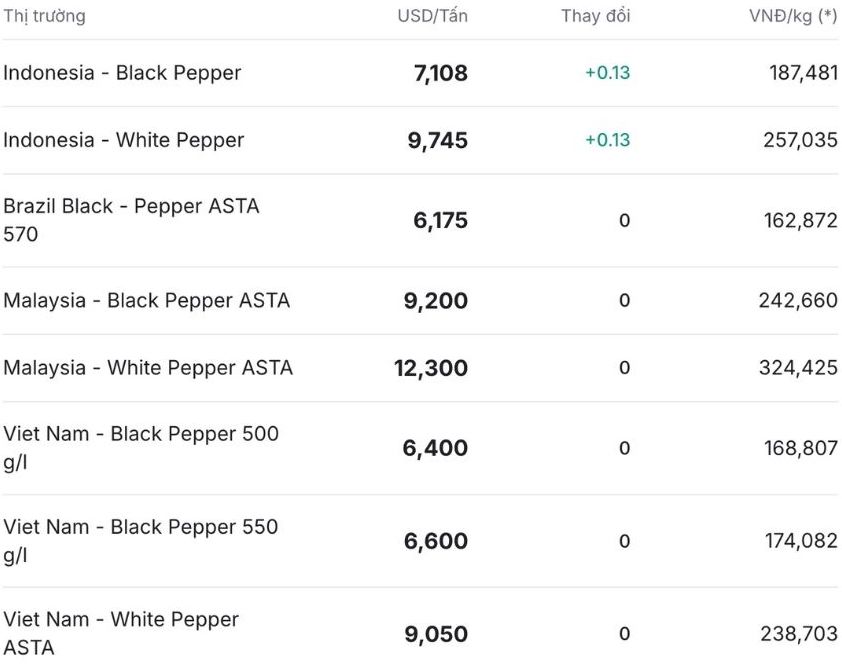Domestic pepper prices: Green
As of 11:30 today (November 17), the domestic pepper market has turned to increase prices in the first session of the week in most areas, averaging 145,100 VND/kg. Currently, the price ranges from 144,500 - 146,000 VND/kg.
At the end of the second consecutive week of price reduction, key areas reversed and increased prices, except for Gia Lai province, which did not change. The price list on the market in key areas is as follows:
Ho Chi Minh City and Dong Nai both increased by VND 500/kg, bringing the market to VND 144,500/kg.
Dak Lak and Lam Dong provinces adjust prices to be 500 VND/kg higher, setting the highest price of 146,000 VND/kg.
World pepper prices: Continue to increase
In the world market, pepper prices are mostly stable in the regions. In particular, the Indonesian exchange - one of the most vibrant markets continues to increase prices. Currently, these two items maintain an increase of 0.13%, trading in the range of 7,108 - 9,745 USD/ton (equivalent to 187,481 VND/kg - 257,035 VND/kg).
On the other hand, the Brazilian market was stable in the first session of the week, currently holding at 6,175 USD/ton (about 162,872 VND/kg). Meanwhile, black and white pepper remained unchanged, trading at 12,300 USD/ton and 9,200 USD/ton.
In the pepper export market of Vietnam, the price of black pepper of 500 g/l and 550 g/l is flat, anchored at 6,400 - 6,600 USD/ton. ASTA white pepper prices remain high, currently standing at 9,050 USD/ton (equivalent to 238,703 VND/kg).

Assessment and forecast
With the price range ranging from 144,500 - 146,000 VND/kg, pepper growers still make a profit, but the profit margin has become thinner due to high fertilizer, labor and transportation costs. In the context of prices having been adjusted for two consecutive weeks and the world market temporarily stabilizing, people are advised not to sell massively when prices are low, should divide the amount of goods sold according to each price beat, prioritize working with reputable businesses and agents, and clear contracts to limit risks.
On the business side, proactively source standard raw materials, increase the proportion of deep processing and take advantage of opportunities from favorable tax policies in major markets are considered the key to helping the pepper industry maintain export turnover growth in the coming time.











